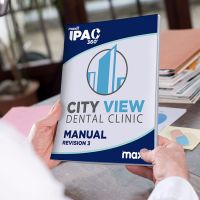Common Mistakes in IPAC and How to Avoid Them

Infection control is a critical component of healthcare, yet it's often overlooked or taken for granted. In reality, the improper cleaning and disinfecting of surfaces, inadequate use of personal protective equipment (PPE), and lack of proper hand hygiene protocols can all contribute to the spread of infections. In fact, the World Health Organization (WHO) estimates that healthcare-associated infections (HAIs) affect millions of people worldwide each year, resulting in significant morbidity, mortality, and economic costs. As healthcare professionals, it's essential that we prioritize infection control and take proactive steps to prevent the spread of infections in our patients and colleagues.
- Not properly cleaning and disinfecting surfaces: Many healthcare professionals may not follow proper cleaning and disinfecting protocols, which can lead to the spread of infections.
Develop and implement a comprehensive infection control plan: This plan should include protocols for cleaning and disinfecting surfaces, using PPE, practicing hand hygiene, sterilizing equipment, and instruments, storing and handling medical/dental supplies, ventilating the environment, and monitoring and maintaining environmental services.
- Not using personal protective equipment (PPE) correctly: PPE, such as gloves, masks, and gowns, are essential for preventing the transmission of infections. However, many healthcare professionals may not use PPE correctly or may not use it consistently.
Provide ongoing education and training: Healthcare professionals should receive regular training on infection control measures to ensure they understand how to prevent the spread of infections.
- Not following proper hand hygiene protocols: Hand hygiene is one of the most important infection control measures, but many healthcare professionals may not follow proper protocols, such as washing their hands frequently enough or using the correct hand sanitizer.
Conduct regular audits and inspections: Conduct regular audits and inspections to ensure that infection control protocols are being followed correctly and consistently.
- Not properly sterilizing equipment and instruments: Sterilizing equipment and instruments is crucial for preventing the spread of infections. However, many healthcare professionals may not follow proper sterilization protocols or may not sterilize equipment and instruments regularly enough.
Implement a sterilization monitoring and control program: Implement a sterilization monitoring and control program that includes regular checks on sterilization equipment, monitoring of sterilization cycles, and verification of sterility using established protocols. This program should also include training for staff on proper sterilization techniques and procedures. Additionally the use of technology such as automated sterilization monitoring and logging systems can greatly improve sterilization processes.
- Not properly storing and handling medical supplies: Medical supplies can be contaminated if they are not stored and handled properly. This can lead to the spread of infections.
Encourage teamwork and communication: Infection control is a team effort that requires effective communication and collaboration among healthcare professionals.
- Not following proper ventilation protocols: Poor ventilation in healthcare settings can contribute to the spread of infections by circulating airborne pathogens.
Regularly inspect and maintain ventilation systems: Regularly inspect and maintain ventilation systems to ensure they are functioning properly and effectively removing airborne pathogens. This includes checking filters, ducts, and fans, as well as performing regular cleaning and disinfection of vents and air handlers.
- Not monitoring and maintaining environmental services: Environmental services, such as cleaning and disinfecting, are critical for maintaining a clean and safe environment in healthcare settings.
Establish a comprehensive environmental services program: Establish a comprehensive environmental services program that includes regular cleaning and disinfection of surfaces, floors, and equipment, as well as proper storage and handling of medical/dental supplies. This program should also include regular monitoring and reporting of environmental services to ensure that they are meeting standards and protocols. Additionally consider the importance of patient perception in maintaining a clean and professional environment. A cluttered operatory, reception area, or waiting room can negatively impact patient satisfaction and preception of the office's cleanliness, which may be preceived by the public as not being clean. By prioritizing environmental services and maintaining a clean and organized environment, dental offices can demonstrate their commitment to patient care and satisfaction.











